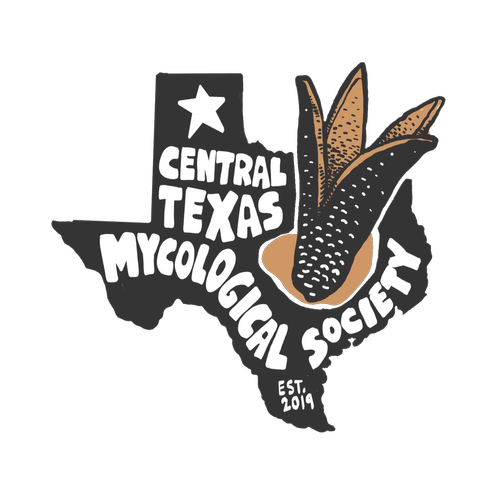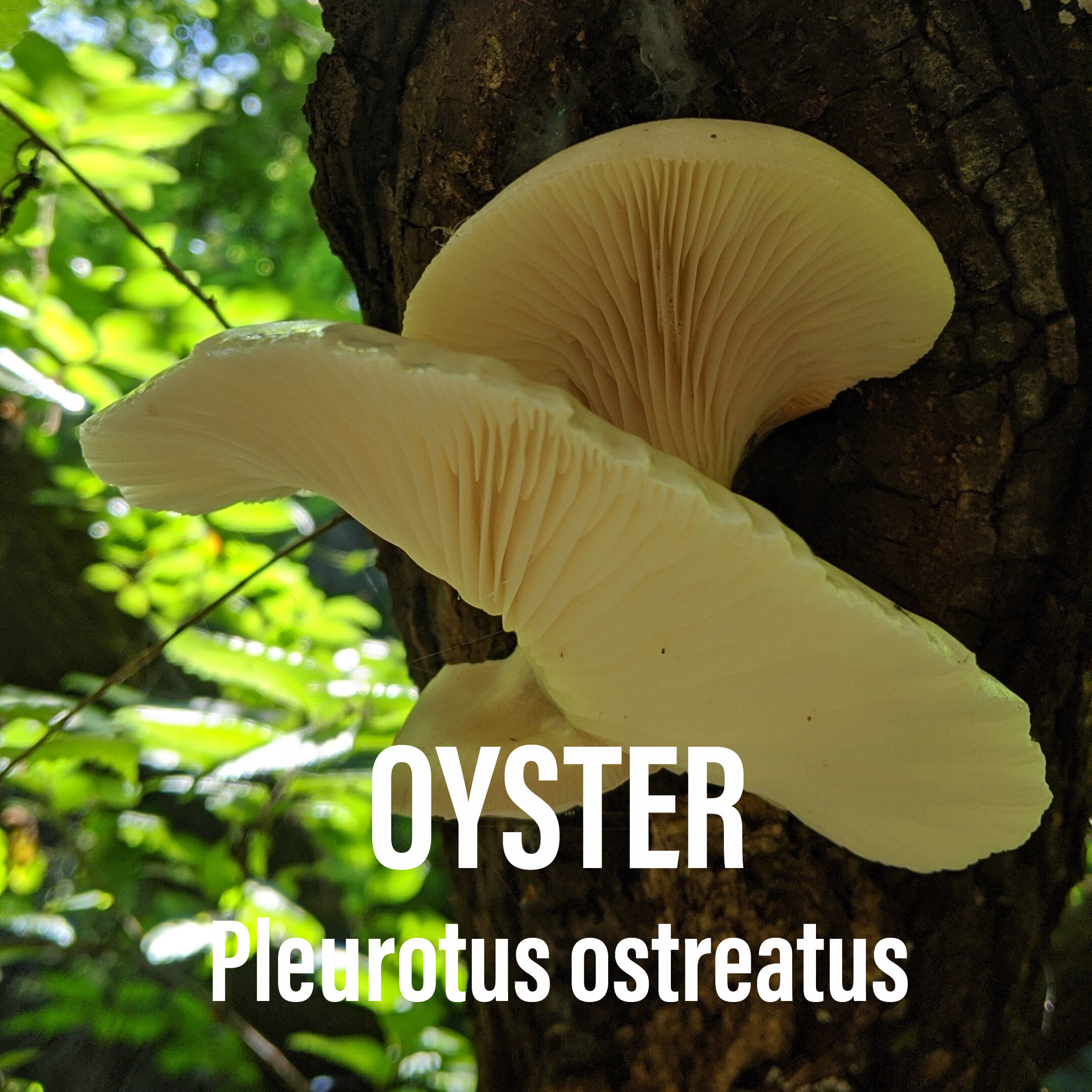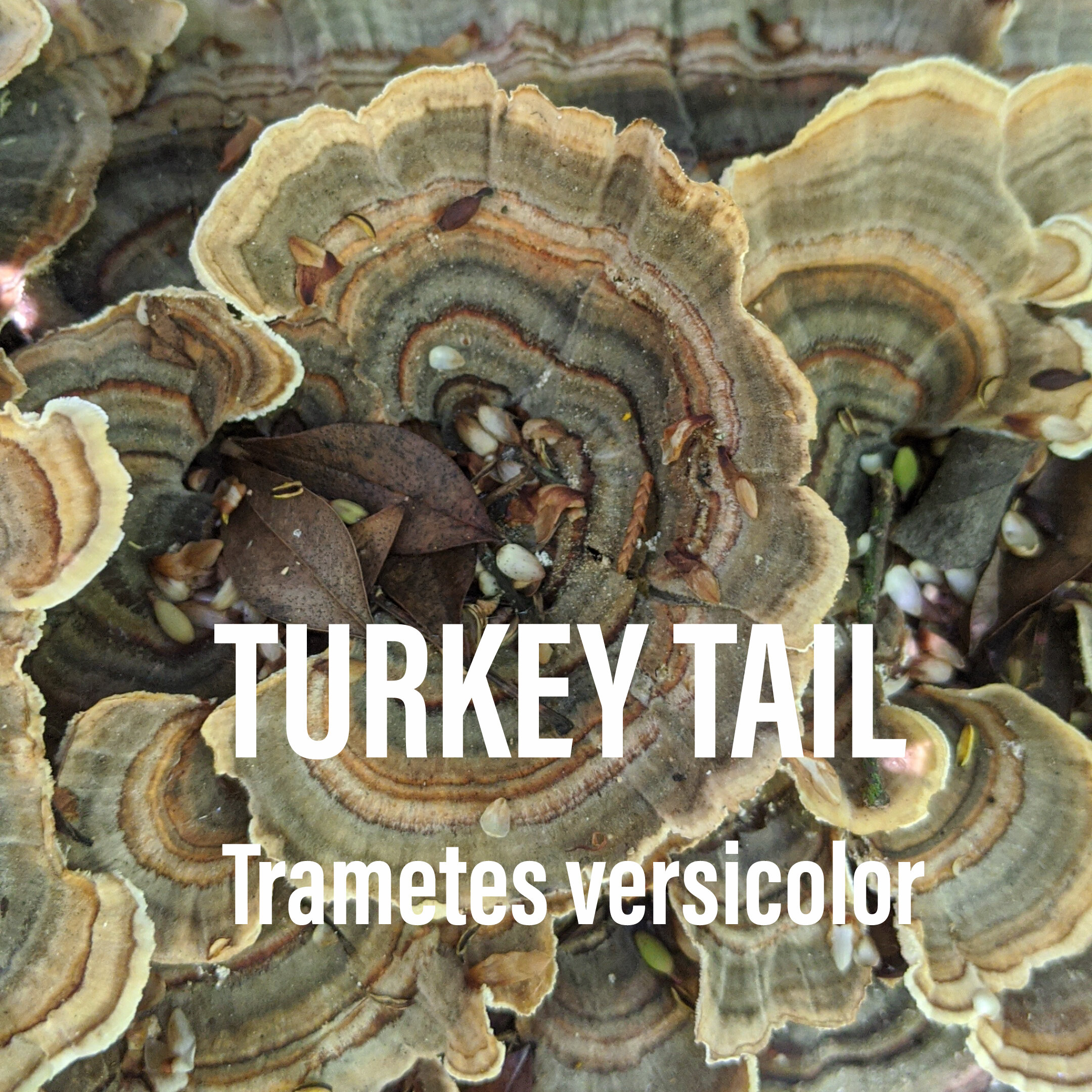Learn wild, edible mushrooms fruiting in Central Texas after rain.
Shoehorn Oyster Mushrooms
Hohenbuehelia petaloides
Fruits after rain in mulch or woody debris
Considered carnivorous because it traps nematodes with “sticky knobs” in the mycelium to obtain nitrogen and grow.
Edible when cooked but can be tough and mealy
Shoehorn Oyster Mushrooms, Hohenbuehelia petaloides is distinctively shaped; its "petaloid" habit often makes it look like a shoehorn with gills, or a rolled-up funnel. Other identifying features include its fairly crowded whitish gills, a white spore print, mealy odor and taste—and, under the microscope, gorgeous "metuloids" (thick-walled pleurocystidia). It often appears in clusters in urban, semi-urban, or even household settings, and is frequently associated with woody debris (though it does not usually grow directly from dead wood) or cultivated soil. However, it can be found in woodland settings, too, where it tends to grow alone or in small groups.
Because this mushroom grows in wood chips which are a good source of carbon but a terrible source of nitrogen, the fungi needs to make proteins. Both Hohenbuehelia and Pleurotus can supplement their protein needs by trapping and consuming nematodes, which are small flat worms that are very abundant in wood and soil. The fungi have "sticky knobs" on the hyphae that grow through the wood. These sticky knobs attach to curious nematodes as the nematodes attempt to eat the mycelium. The nematode thrashes around and additional parts of its body become stuck. The hyphae then grow into the body of the nematode and digest it, providing the fungus with the nitrogen it needs. That makes these fungi carnivorous!
Look-alikes: Oyster mushrooms, Pluerotus speciestions?place_id=18&subview=map&taxon_id=48496 or Lentinellus cochleatus (none observed in Texas) but grow on decomposing wood.
WOOD BLEWIT Collybia species, formerly Lepista, Clitocybe
Distinct lilac to purple-pink color
Grows in and decomposes leaf duff
Light pink to white spores
Great in breakfast tacos
As the weather stays cool, look out for the edible Wood Blewit, Collybia nuda or tarda species (formerly Lepista and Clitocybe.) This distinct lavender-colored mushroom is found from fall through spring and fruiting in hardwood leaf duff which is decomposes. Fresh wood blewits are great with eggs in breakfast tacos. As they get older they become more tan and iridescent colored on the cap and taste bitter. I throw the older wood blewits my compost leaf pile because they are such great decomposers and will colonize and grow in hardwood leaf litter.
Look-alikes: Be warned because there are deadly, poisonous look-alikes in the Cortinarius or webcap family that grow in similar conditions. It's important to do a spore print AND also confirm the ID with an expert. The spores of the wood blewit are light pink to white and the spores of Cortinarius mushrooms are rust colored. See our blog post with lots of photos and details to help you identify this mushroom.
OYSTER Pleurotus ostreatus
Color can vary white, tan and gray
White to cream gills, run down stem
Cap fan shaped, 2"-8" across, white spores
Grows in clusters and decomposes hardwood
Delicious meat replacement in all types of cuisines
Look-alikes: Southern Jack-o-lantern, Omphalotus subilludens which is toxic and orange to brown in color.
WOOD EAR: Auricularia species
Grows in clusters on decaying hardwood after rain
Cap is wavy, ear-shaped to irregular, 1-4" and > 1/4" thick
Jelly texture and lacks gills or pores
Produces white spores
Absorbs flavors, great in soups, contains protein, iron, calcium and phosphorus
Edibility: Wood ear mushrooms are a popular ingredient in many Chinese dishes, such as hot and sour soup, and also used in Chinese medicine. It is also used in Ghana, as a blood tonic. Modern research into possible medical applications has variously concluded that wood ear has anti-tumor, hypoglycemic, anticoagulant and cholesterol-lowering properties.
Look-alikes: Amber Jelly, Exidia recisa which is also edible.
TURKEY TAIL Trametes versicolor
Variable coloration, distinct striping pattern
Grows in overlapping clusters on logs and stumps
No gills, pores are small and round, white to light brown
Tough, leathery flesh
Medicinal and can be brewed into a tea, broth, or extracted into a tincture.
Look-alikes: False turkey tail. or Stereum ostrea and is non-toxic. Mushroom Expert has a useful check list to determine if it is true medicinal turkey tail.
Become a member and learn more about wild mushroom foraging in Texas!
Membership benefits include early access and discounts to walks, workshops, and more. Your membership helps support the larger community! Tag us to get help with ID and add your observations to iNaturalist.org. If you are trying a new mushroom, confirm the ID with an expert, then try a small amount to make sure you don't have an allergic reaction. Texas Mushroom Identification Facebook group is great for quick responses and ID help. Also, don't forget to add your finds on the Mushrooms of Texas project on iNaturalist.









